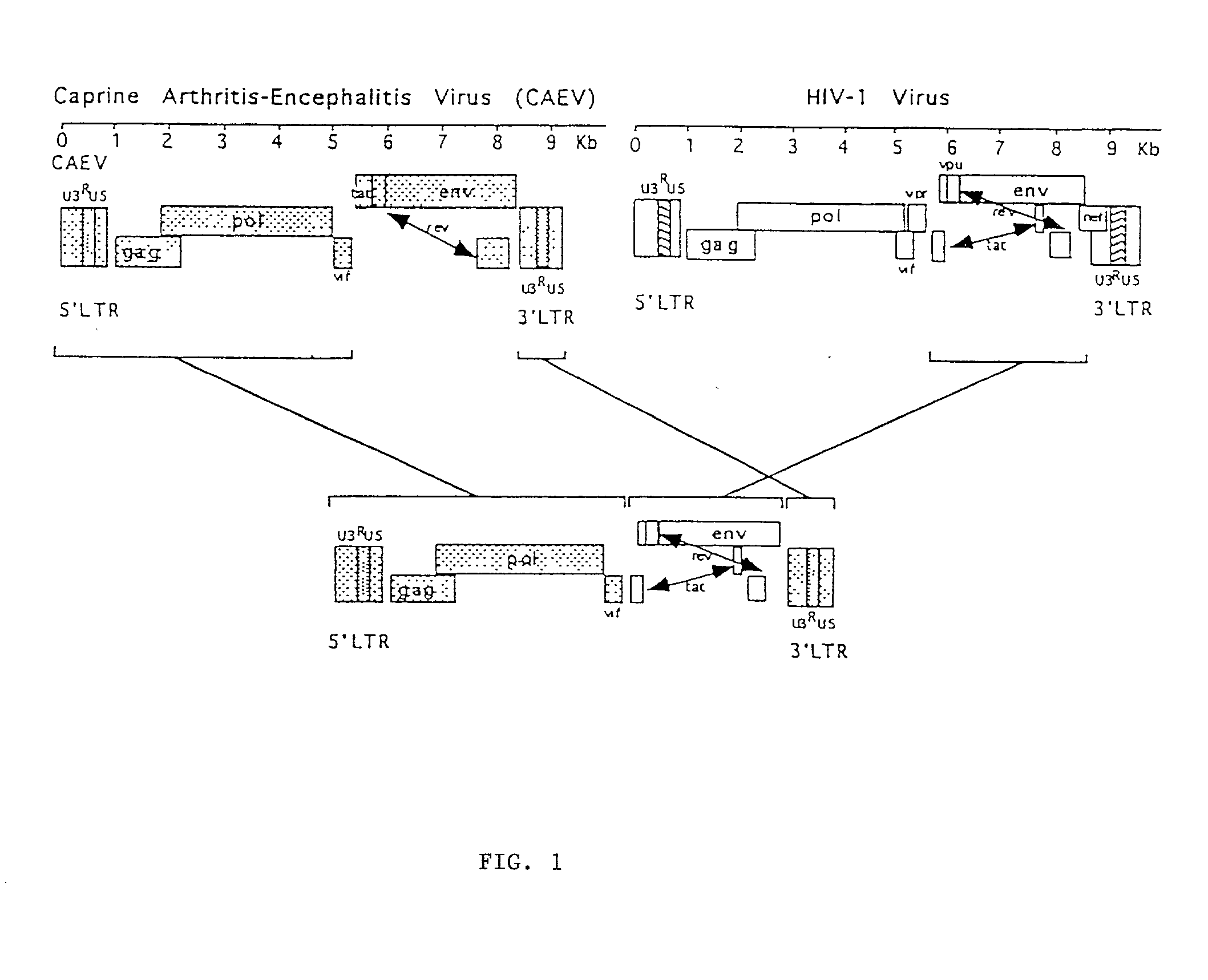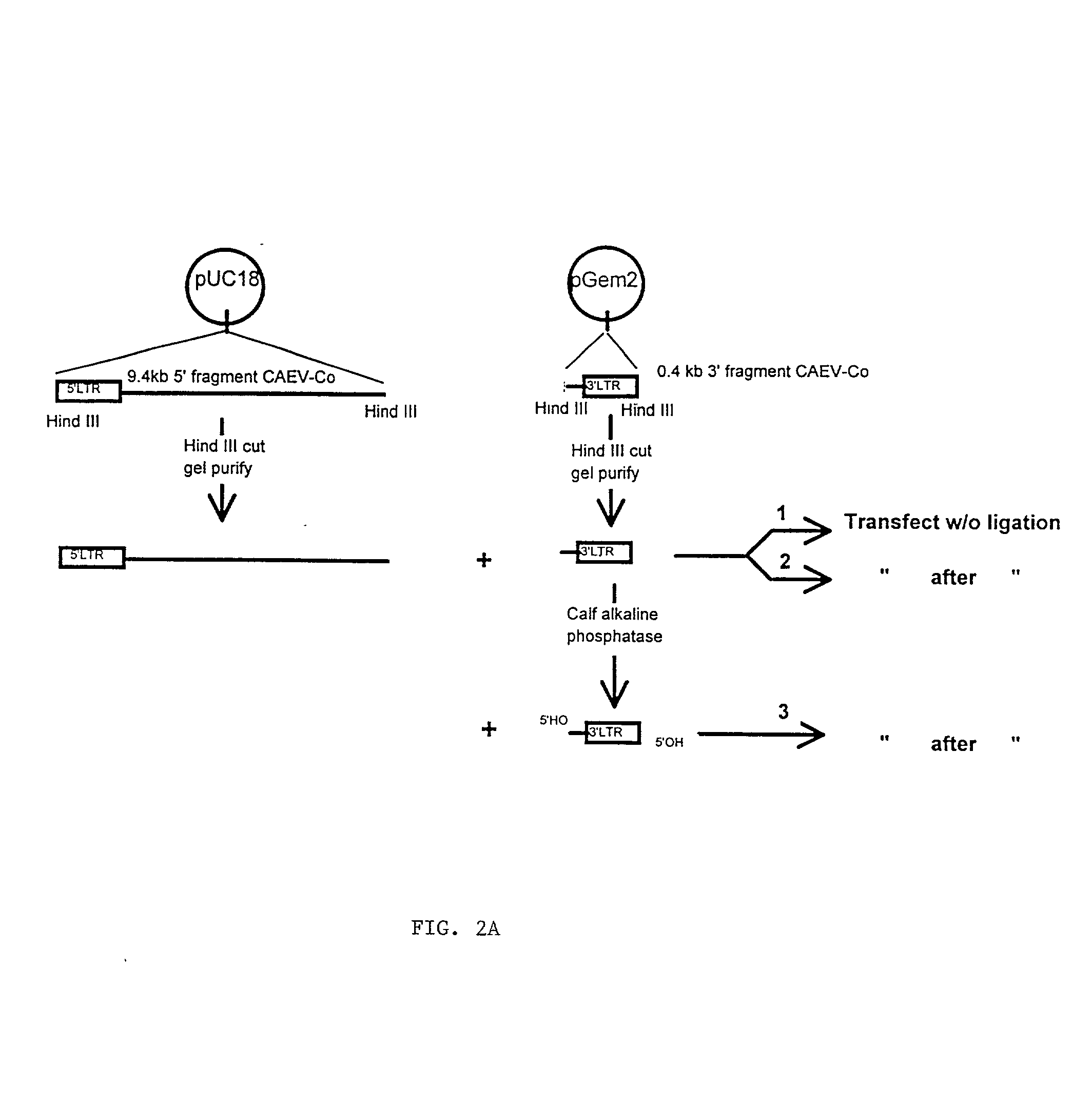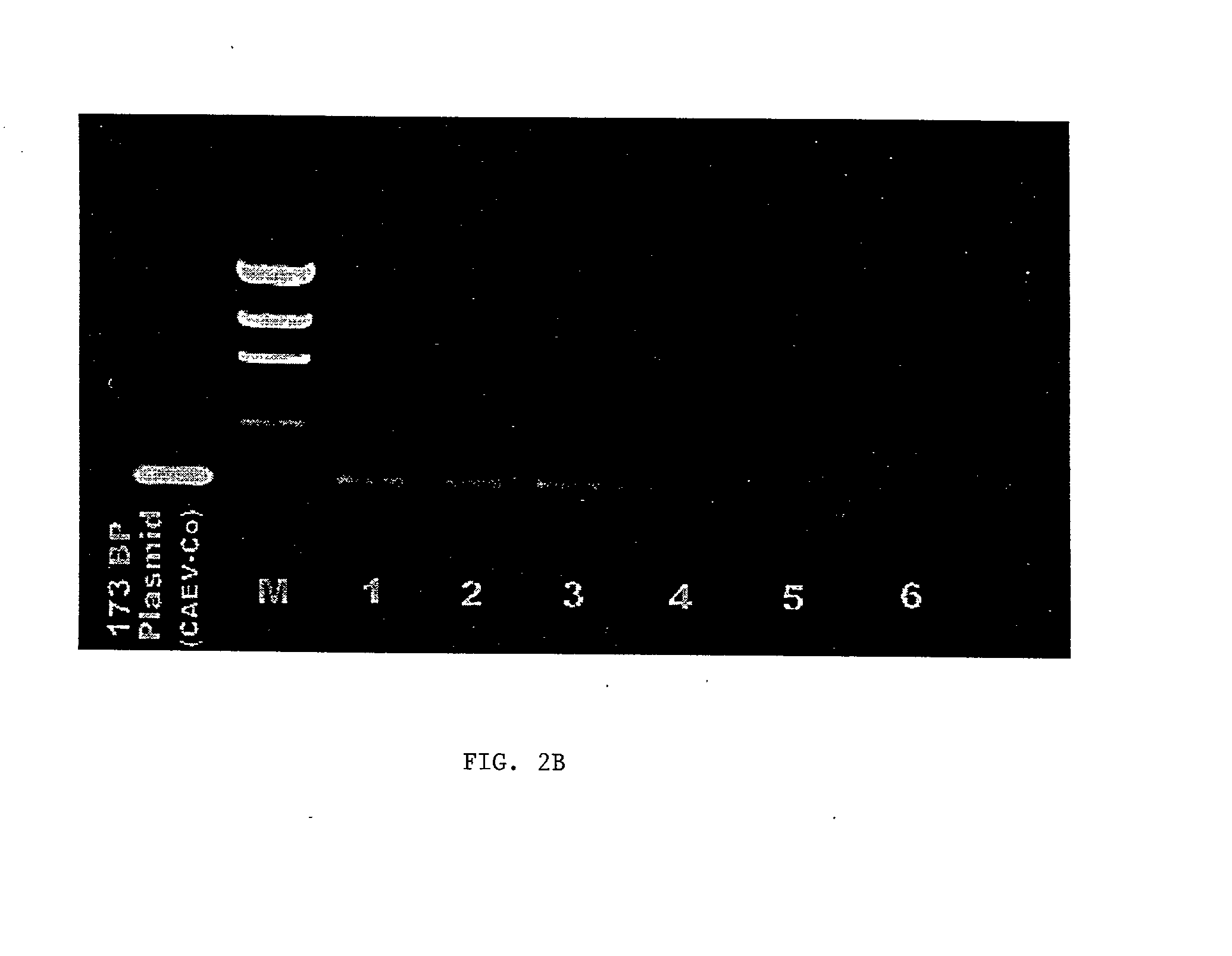Viral chimeras comprised of caev and hiv-1 genetic elements
a technology of genetic elements and chimeras, applied in the field of immunological response against hiv1, can solve the problems of reducing t cell levels, facilitating patients' typical death, and much more rapid course of infection
- Summary
- Abstract
- Description
- Claims
- Application Information
AI Technical Summary
Benefits of technology
Problems solved by technology
Method used
Image
Examples
example ii
EXPRESSION OF RECOMBINANT RETROVIRUSES IN HOST CELLS
[0082] The viability of the complete CHIV construct is tested by transfection into GSM cells or the human rhabdomyosarcoma line RD-5 (Luciw et al., Proc. Natl. Acad. Sci. 92:7490-7494 (1995)). Transfected and mock transfected culture supernatants are tested for viral production by CAEV gag and HIV-1 env RT-PCR and by RT assay. A step-by-step analysis of transfected cells is performed to detect functioning of the construct, including: (a) immunoassays to detect production of gp120 (by gp120 antigen capture ELISA) and the CAEV gag protein p28 (by Western blot using polyclonal goat sera); (b) CAEV gag and HIV-1 env PCR of the GSM or RD-5 genomic DNA to detect proviral DNA sequences; (c) CAEV gag and HIV-1 env RT-PCR of total cellular RNA.
[0083] FIG. 2A-B shows that the two CAEV fragments comprising the CAEV-Co genome, a 9.4 kb 5' fragment in pUC18, and a 0.4 kb 3' fragment in pGem2, will produce live virus when transfected into GSM ce...
example iii
DETERMINATION OF THE HOST RANGE OF CHIV
[0087] The host cell range of viable chimeras is determined as described by Luciw et al. (Luciw et al., Proc. Natl. Acad. Sci. 92:7490-7494 (1995)) by inoculation of the following cell cultures with a CHIV viral stock, produced by transfected cells as described above or by subsequent passage therefrom, and which may be concentrated if necessary: human and macaque PBMC and macrophages, GSM cells, and the CD4+ cell lines HUT78 and CEMX174. Serial dilutions of the viral stock may be used to inoculate the cultures, and amount of virus used typically can range from about 0.1 to about 1.times.10.sup.6 TCID.sub.50. Expression of chimeric genes in the cultures is evaluated by RT assays and CAEV gag and HIV-1 env RT-PCR as in the transfection experiments. In addition, RT-PCR products are sequenced to confirm the identity of the expressed genes. Viral protein production is monitored by immunologic methods as in the transfection experiments, and if necess...
example iv
PREPARATION OF A CHIV VIRUS STOCK
[0094]
[0095] The culture supernatant from a .sup.3H-uridine labeled CHIV-producing host cell culture is subjected to sucrose density gradient centrifugation. The location of the retroviral particles are determined by collecting fractions from the gradient and assaying for radioactivity and reverse transcriptase activity. Alternatively, the cultures may be unlabeled, and immunological methods can be used to identify fractions containing viral proteins.
PUM
| Property | Measurement | Unit |
|---|---|---|
| resistance | aaaaa | aaaaa |
| nucleic acid sequence | aaaaa | aaaaa |
| Hamming distance measurement | aaaaa | aaaaa |
Abstract
Description
Claims
Application Information
 Login to View More
Login to View More - R&D
- Intellectual Property
- Life Sciences
- Materials
- Tech Scout
- Unparalleled Data Quality
- Higher Quality Content
- 60% Fewer Hallucinations
Browse by: Latest US Patents, China's latest patents, Technical Efficacy Thesaurus, Application Domain, Technology Topic, Popular Technical Reports.
© 2025 PatSnap. All rights reserved.Legal|Privacy policy|Modern Slavery Act Transparency Statement|Sitemap|About US| Contact US: help@patsnap.com



